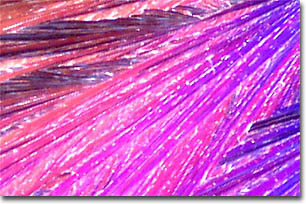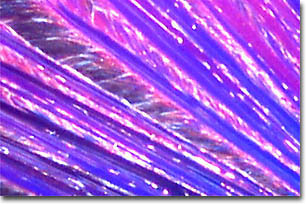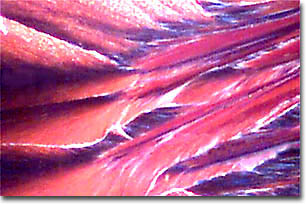QX3 Digital Image Gallery
Polarized Light
Thiamine (vitamin B1)
The first recognized vitamin deficiency disease was beriberi, a condition that is manifested by numerous neurological and metabolic disorders. Sufficient thiamine in the diet is a sure cure for beriberi, a fact that was established over a long period of time through crude dietary experiments by the Chinese, Japanese, and Dutch. Biochemically, thiamine forms a coenzyme after phosphorylation by an ATP-dependent pyrophosphorylase. Thiamine pyrophosphate contains a substituted pyrimidine nitrogen heterocyclic ring and a thiazole nitrogen-sulfur heterocycle. The thiazole moiety is responsible for the coenzyme's activity in pyruvate metabolism where it acts to perform a nonoxidative decarboxylation. Clinically, thiamine helps to maintain normal function of the nervous system, muscles, and heart, and is necessary for normal growth and development. Common sources of thiamine are kidney, liver, brewer's yeast, flour, beans, pork, salmon, soybeans, and wheat germ. Symptoms of thiamine deficiency are loss of appetite, fatigue, nausea, vomiting, and mental problems. Severe deficiency leads to beriberi, pain in the arms and legs, heart enlargement and fluid accumulation.



Polarized light images were captured using an Intel Play QX3 computer microscope modified for crossed polarized illumination. Additional light was applied to the specimens using light pipes from a Dolan-Jenner Model 180 fiber optics illuminator containing a 150 watt projection lamp. A 5/16-inch hole was drilled into the light mixing chamber at the base of the microscope and the light pipe was pointed towards the far wall of the chamber to increase illumination.
